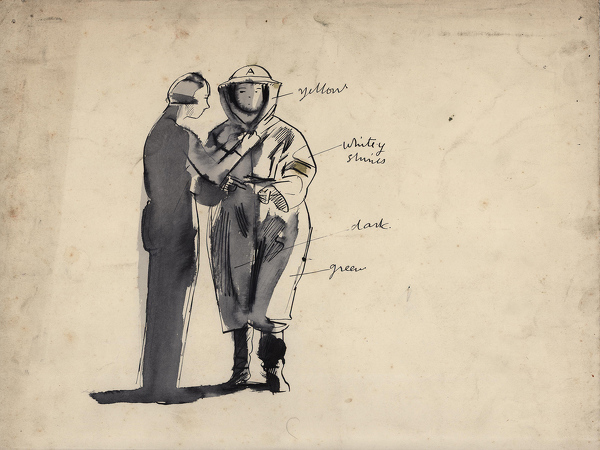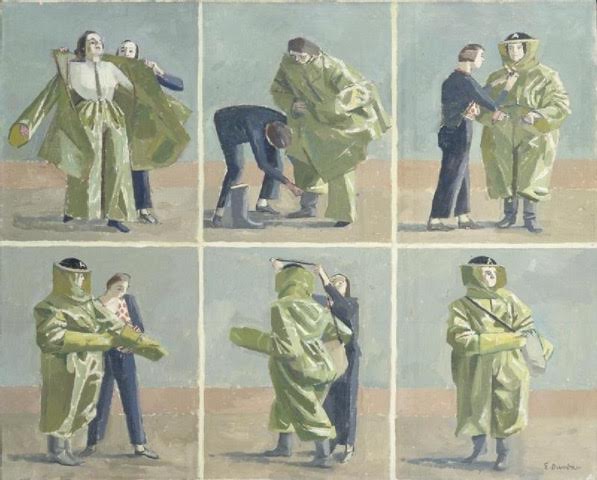
 SOLD
SOLD
Evelyn Dunbar:
Studies for Putting on Anti-gas Protective Clothing, 1940, study c.
Framed (ref: 7676)
Inscribed with colour notesPen, ink and wash 11 1/2 15 in. (29 x 38.5 cm)
Tags: Evelyn Dunbar ink war women World War II Paintings by British Artists
Provenance: The Artist's Family; thence by descent
Exhibited: WW2 - War Pictures by British Artists, Morley College London, 28 October -23 November 2016, cat 79c.
Literature: WW2 - War Pictures by British Artists, Edited by Sacha Llewellyn & Paul Liss, July 2016, cat 79c, page 120-121.By 1943 there were 7.25 million women engaged in war-related employment , the majority in agriculture, manufacturing and civil defence.
Evelyn Dunbar, the only woman to receive a full time salary, was commissioned to produce ‘agricultural and woman subjects’
Although recording the role of women was one of the stated aims of WAAC as Brian Foss has pointed out the scheme nevertheless favoured images of women performing conventional roles - for instance the predominance of paintings of women as nurses inspite of the fact that in 1943 munitions worker outnumbered nurses by 100 to 1 is noticeable. Dunbar, as the only wpman to be salaried as an Official War Artists delighted in showing women at work in all of the essential roles they performed during the war.

Putting on Anti-gas Protective Clothing (Art.IWM ART LD 247)
For Dunbar the Second World War offered new opportunities to explore the relationship between people and the natural world. In pictures examining how the war effort affected the home front, we see Dunbar move out of the realm of the domestic garden and into the productive world of farming. Her principle subject,the Women’s Land Army, gave rise to compositions such as ‘Men Stooking and Girls Learning to Stook’ (1940) and ‘Milking Practice With Artificial Udders’ (1940), closely related to her illustrations for A Book of Farmcraft. As well as demonstrating Dunbar’s experimentation with new painting techniques, these pictures served a didactic purpose in showing the correct ways of undertaking manual tasks.








